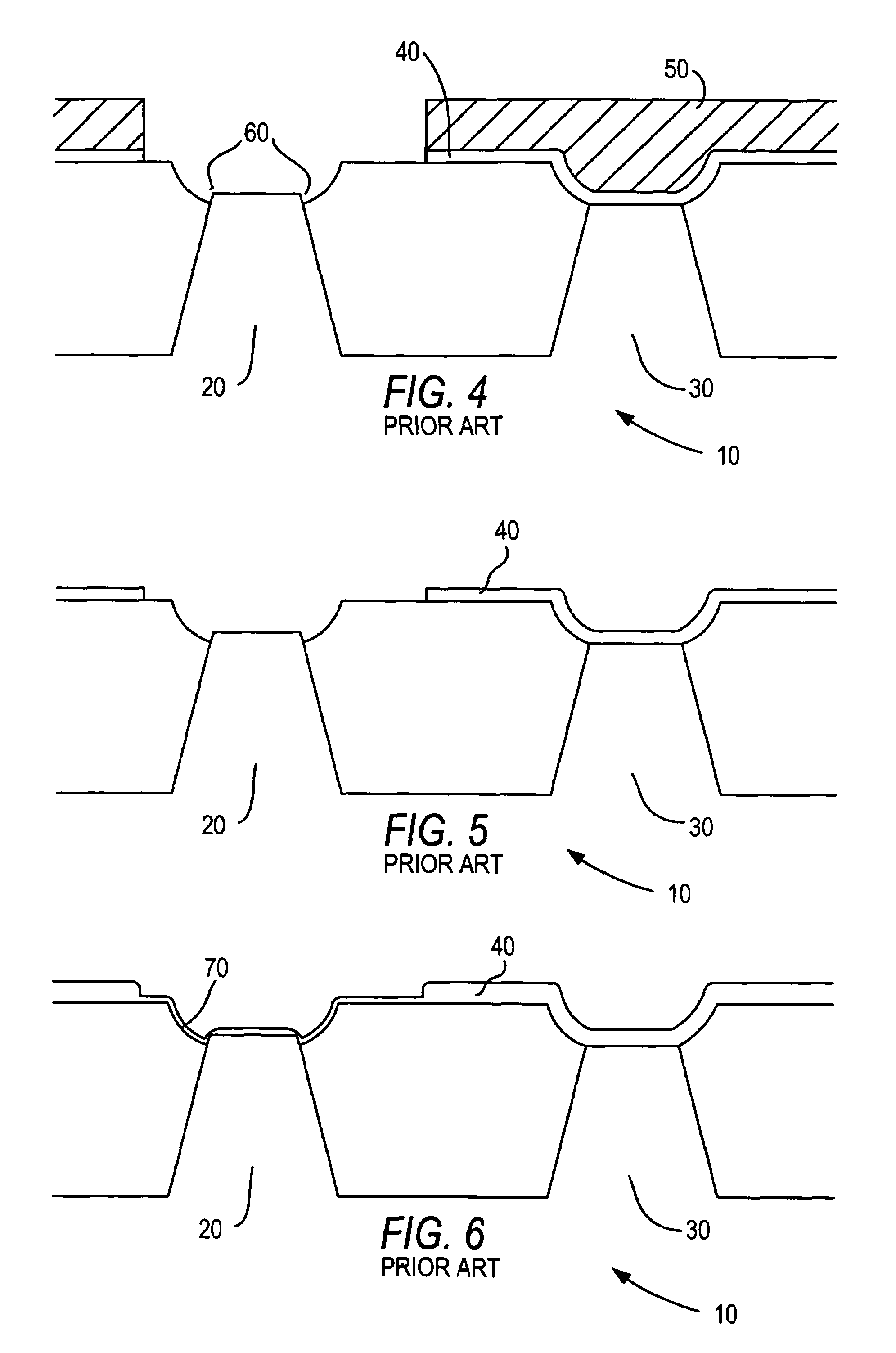Reduction of field edge thinning in peripheral devices
a technology of peripheral devices and field edges, applied in the direction of semiconductor devices, electrical apparatus, transistors, etc., can solve the problems of less variable and more reliable devices, and achieve the effect of reducing gate oxide thinning
- Summary
- Abstract
- Description
- Claims
- Application Information
AI Technical Summary
Benefits of technology
Problems solved by technology
Method used
Image
Examples
Embodiment Construction
[0022]The invention is directed to the fabrication of peripheral devices. Peripheral devices may be used to implement storage cells in memory devices such as, for example, SRAMs, DRAMs, and memory devices used in flash applications.
[0023]In the fabrication of some peripheral memory devices, a dielectric layer is deposited over the peripheral devices and the memory devices to which the peripheral devices are coupled. The dielectric layer may be an interpoly dielectric layer. Such an interpoly dielectric layer may be, for example, oxide-nitride-oxide or aluminum-oxide. The dielectric is used as an oxidation and wet-oxide etch barrier. In some peripheral device fabrication, the dielectric layer is removed from the entire peripheral device but not the memory device. The dielectric layer is removed from the peripheral device to allow thin and thick gate oxides to be grown over the peripheral device. That is, the low and high voltage devices are exposed before the growth of the thin and t...
PUM
 Login to View More
Login to View More Abstract
Description
Claims
Application Information
 Login to View More
Login to View More - R&D
- Intellectual Property
- Life Sciences
- Materials
- Tech Scout
- Unparalleled Data Quality
- Higher Quality Content
- 60% Fewer Hallucinations
Browse by: Latest US Patents, China's latest patents, Technical Efficacy Thesaurus, Application Domain, Technology Topic, Popular Technical Reports.
© 2025 PatSnap. All rights reserved.Legal|Privacy policy|Modern Slavery Act Transparency Statement|Sitemap|About US| Contact US: help@patsnap.com



